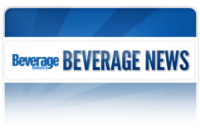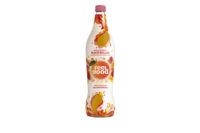Global Alcohol Drink Trends
By ANNE NUGENT
Developing markets and premium products drive growth
Global volume sales of
alcohol drinks reached almost 200 billion liters in 2004, up by 11.4
percent between 1999 and 2004. Overall alcohol drinks growth was driven
largely by demand for beer in the two key emerging regions of Asia-Pacific
and Eastern Europe, each of which registered double-digit volume growth
during the past few years. In the second segment of a two-part global
beverage review, Euromonitor International looks at the key regional trends
affecting demand in 2004 and glimpses at 2005 and beyond.
Beer in Asia-Pacific
The impact of rising demand for beer in emerging
markets has been a decline in sales of local spirits, particularly in the
key growth market of China. This move toward drinks with a lower alcohol
content has been aided by initiatives from the government as well as a
growing consumer interest and ability to purchase non-traditional types of
alcohol. Elsewhere in the Asia-Pacific region, however, Japan and South
Korea saw economic difficulty — aging populations and health concerns
exerted a negative impact on beer sales — while in Indonesia, beer
struggled to recover from the effect of the Bali bombings on the
country’s tourist industry.
Vietnam, by contrast, has been a star performer,
having grown by almost 50 percent between 1999 and 2004. Its meteoric rise
in the past few years, due in part to a strong economy, has prompted a
number of brewers to seek a presence in this market. Carlsberg recently
signed a strategic agreement with Hanoi brewer while Anheuser-Busch signed
a cooperation agreement with Sabeco. The outlook for beer in this market
looks very promising with Euromonitor projecting a compound annual growth
rate (CAGR) of more than 6 percent for the next five years.
Other developments in the region
According to Euromonitor, China was also the most
significant force behind growth in the wine sector in the Asia-Pacific
region in 2004, seeing increasing volume sales underpinned by rising demand
for still grape wine among urban consumers who increasingly adopted Western
drinking habits. Similar trends also boosted sales in markets such as South
Korea, Thailand and Taiwan, though wine continued to register a poor
performance in Japan, where consumers migrated away from traditional
saké products to more fashionable and cheaper local spirits like
shochu.
Premium products emerging in Russia
As with China, a similar pattern has emerged in
Russia, where increasing health consciousness as well as novelty and
intensive marketing have played a part in persuading consumers to shift
from low-end vodka to products such as beer and flavored alcohol beverages
(FABs). With key cities such as Moscow and St. Petersburg now nearing
saturation with around 70 liters per head, beer manufacturers are looking
to expand into other less-developed regions such as Siberia. In 2004, there
was a concerted effort by companies to encourage consumers to trade up to
premium beer in urban areas, with particular emphasis on branding in the
on-trade markets.
While demand for traditional economy spirits receded
in Russia, imported products, such as blended Scotch whisky, witnessed
significant growth as they gained in popularity among affluent urban
consumers, due to their prestigious image. Demand for premium local vodka
brands was also in evidence. Additionally, wine is growing well, even with
keen price competition, particularly within the off-trade between wine from
neighboring countries like Moldova and imports from France, Spain and
Italy.
New spirits for Eastern Europe
Elsewhere in Eastern Europe, 2004 saw the trend toward
imported products further bolstered in the countries that acceded to the
European Union by the related abolition of import
duties. Lower prices of imported spirits, in particular, played an
important part in the relatively strong growth displayed by Poland in 2004.
Wyborowa’s Passport Scotch whisky brand showed strong growth, spurred
by a significant drop in prices in preparation for entry to the European
Union. Trading up to imported products in several major Eastern European
markets bolstered value sales in the region, which increased significantly
more than volume sales at the end of the review period.
According to Euromonitor, the Ukrainian beer market,
the third-largest in the region, showed dynamic
growth in volume terms, with overall sales increasing by 11 percent in 2004
to reach 1.7 billion liters. Like Russia before it, growth is being driven
by increasing disposable incomes, a shift away from spirits toward drinks
with lower alcohol content and improvements to product quality. Per-capita
consumption remains the lowest in the region due to the strong tradition of
vodka but Euromonitor expects demand for beer to continue its upward trend
in the coming years.
Seismic shift in Western Europe
The alcohol drinks market in Western Europe witnessed
stagnation, as sales were constrained by a high level of maturity, changing
lifestyles and the growing health consciousness of consumers that persuaded
them to reduce their level of alcohol consumption in favor of soft drinks.
A clear picture of the dynamics is exemplified by the performance of soft
drinks in the region, which grew in volume by 21 percent between 1999 and
2004 according to Euromonitor, while sales of alcohol drinks were
completely flat.
The region registered decline in its two largest
sectors in volume terms, beer and wine. As is the case with the United States, beer is showing maturity in traditional
markets such as Germany, and is seeing a
squeeze from competing alcohol drinks such as wine. Meanwhile, the
tradition of drinking wine with long, leisurely meals in the major markets
of France, Italy and Spain, has declined drastically in the past few years
as a result of accelerated lifestyles and strict enforcement of drunk
driving laws. Although signs point to flattening in Spain, at least, and
newer markets including the United Kingdom, the Netherlands, Ireland and
Scandinavia have been flourishing. These vast traditional wine markets of
France and Italy continue to dictate the overall sluggish trend within
Western Europe.
The break in traditional patterns of consumption also
had a significant impact on key spirits markets, with only the United
Kingdom and Italy showing modest volume growth in 2004. In a trend similar
to that within the United States, Euromonitor notes that it is in these
countries where attempts to court fashion-conscious younger consumers with
products aimed at contemporary drinking trends such as cocktails, have been
successful. Generational cycles were also in evidence as, for example,
demand for Scotch whisky in Spain began to fall, while vodka and rum,
perceived to be modern, are in ascendance.
Economic climate dictates choice
Despite the sluggishness of the alcohol drinks market
in Brazil where economic conditions remain fragile, Latin America showed a
good recovery in 2004, buoyed by a return in consumer confidence within
Argentina and Venezuela. The turbulent economic climate in the region saw a
return to relatively inexpensive local products such as cachaça in
Brazil.
The wine market rebounded in 2003 and 2004 as a result
of an improved performance in the all-important Argentinean market. Chile
also showed significant growth for wine, although per-capita consumption of
17 liters per head lags behind that of other producer countries, with highs
of 43 liters in France. It is even surpassed by many non-traditional wine
markets such as the United Kingdom where consumption is around 21 liters
per head. Wine also proved increasingly popular in the potentially
important Mexican market, thanks to lower prices, increased consumer
familiarity and its healthy image.
Some signs of recovery in the beer market were visible
in 2003 and 2004, particularly in Argentina,
where volume sales increased by 7 percent. However, as a whole, the
Latin-American region is still underperforming other emerging markets such
as Eastern Europe.
Difficult economic conditions in major markets
affected alcohol drinks sales in Africa and the Middle East during the
review period. In 2004, the region’s largest market, South Africa,
saw wine volume sales suffer as poor economic conditions caused consumers
to switch to cheaper alcohol drinks such as beer. The negative impact of
wine’s falling volume sales in South Africa was, however, partly
offset by increasing wine sales in Egypt and the United Arab Emirates,
which both benefited from increased levels of tourism in 2004.
An improved economy in Australasia resulted in good
growth in demand in 2004. This region is noteworthy for having the highest
per capita for FABs in the world, of around 13 liters per head compared to
the next highest, Germany, at 5 liters, according to Euromonitor’s
findings. Spirits drinks with an alcohol-by-volume content of less than 20
percent have seen recent success in Greece and the Netherlands among
students and party-goers, with Ursus Roter being one of the star
performers.
Hot in 2005 and beyond
Although FABs hit a peak in the late 1990s and demand
since then has been on the wane, a number of key success markets continued
to show good growth in 2004, including Japan, Russia, Germany and
Australia. The outlook for Germany in 2005, however, is in stark contrast
to previous performance, due to the imposition of taxes which are resulting
in a decline in demand for spirits-based FABs. Some of this shift is
benefiting beer and soft drink mixes, but a definite trend away from these
products overall is developing. Nevertheless other key countries are
predicted to see further growth, even if at a slower pace than in previous
years.
Demand for cider, meanwhile, remained fairly flat in
2004, largely because of the stagnant U.K. market, which is easily the
world’s largest. Some success was seen in France, Spain and Ireland
in 2004, and all of these countries lie within the top five markets. Growth
was boosted by new product launches, including organic versions, new
packaging aimed at the premium end of the market and marketing initiatives
such as mixing cider with ice.
Rosé wine is another hot product in 2005 with
demand being driven by producers — largely within Australasia —
in the shape of new product launches that hit the shelves in time for the
summer season. The hot summer in 2003 boosted demand in a number of
markets, including France where it was the only wine type to grow that
year. In 2005, undoubtedly partly due to oversupply in Australia and
Western Europe, as well as to a need to continue to drive overall demand
for wine, the push with rosé is very much on creating wider consumer
interest and increasing wine drinking frequency.
Within beer, a focus on premium beers — in the
shape of micro-brewed or regional beers, organic brews and wheat and fruit
beers — is expected to gain momentum in mature markets. Within
emerging markets such as China and Russia, polarization between economy
beer to draw new drinkers and higher priced beers to engage urban consumers
is likely to gain pace.
NPD focuses on functional benefits
One of the key trends to watch in the future is the
development of new products with functional ingredients, mirroring trends
already apparent in other food and drink innovations in response to the
growing health and wellness trend. A number of new products recently have
been launched in the alcohol drinks market, including 3 Vodka, the first
soy-based spirit, Namashibori Fiber by Sapporo which is a happoshu beer
with a high fiber content to promote digestion, and Flensburger Malz, a
malt beer with a low calorie content and no sugar, making it suitable for
mainstream consumers as well as diabetics. Euromonitor expects a raft of new developments in this vein to surface in the next couple
of years. BI
Anne Nugent is research manager at Euromonitor
International, a leading provider of global business intelligence and
strategic market analysis, with more than 30 years experience of publishing
market reports, business reference books, online databases and bespoke
consulting projects. Euromonitor International is headquartered in London,
with regional offices in Chicago, Singapore, Shanghai and Vilnius.





